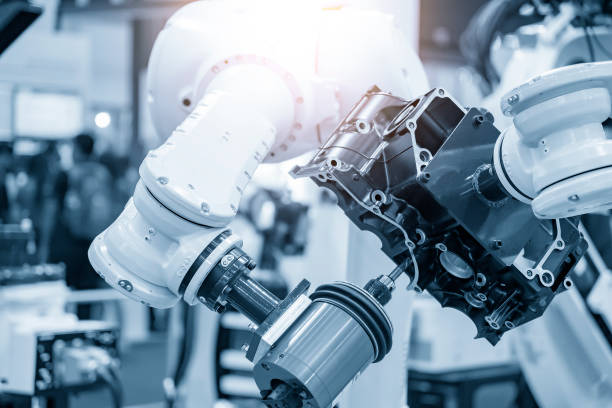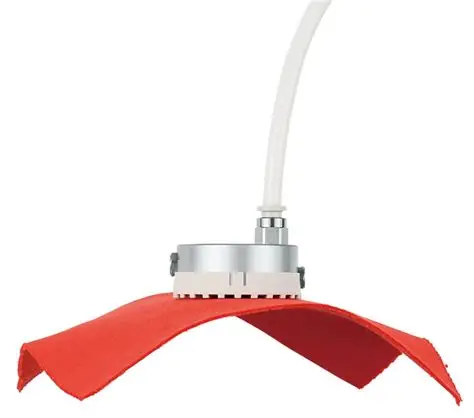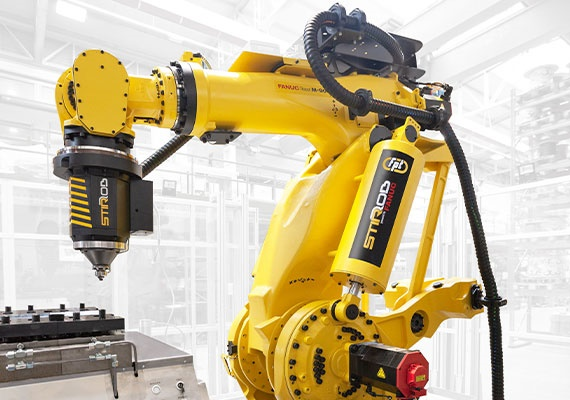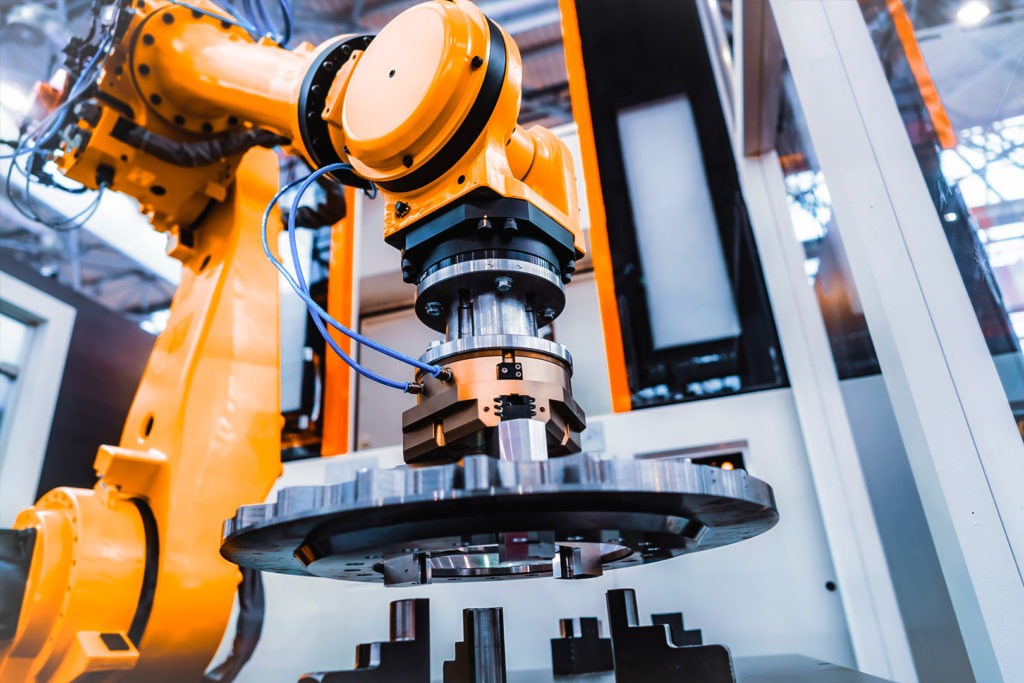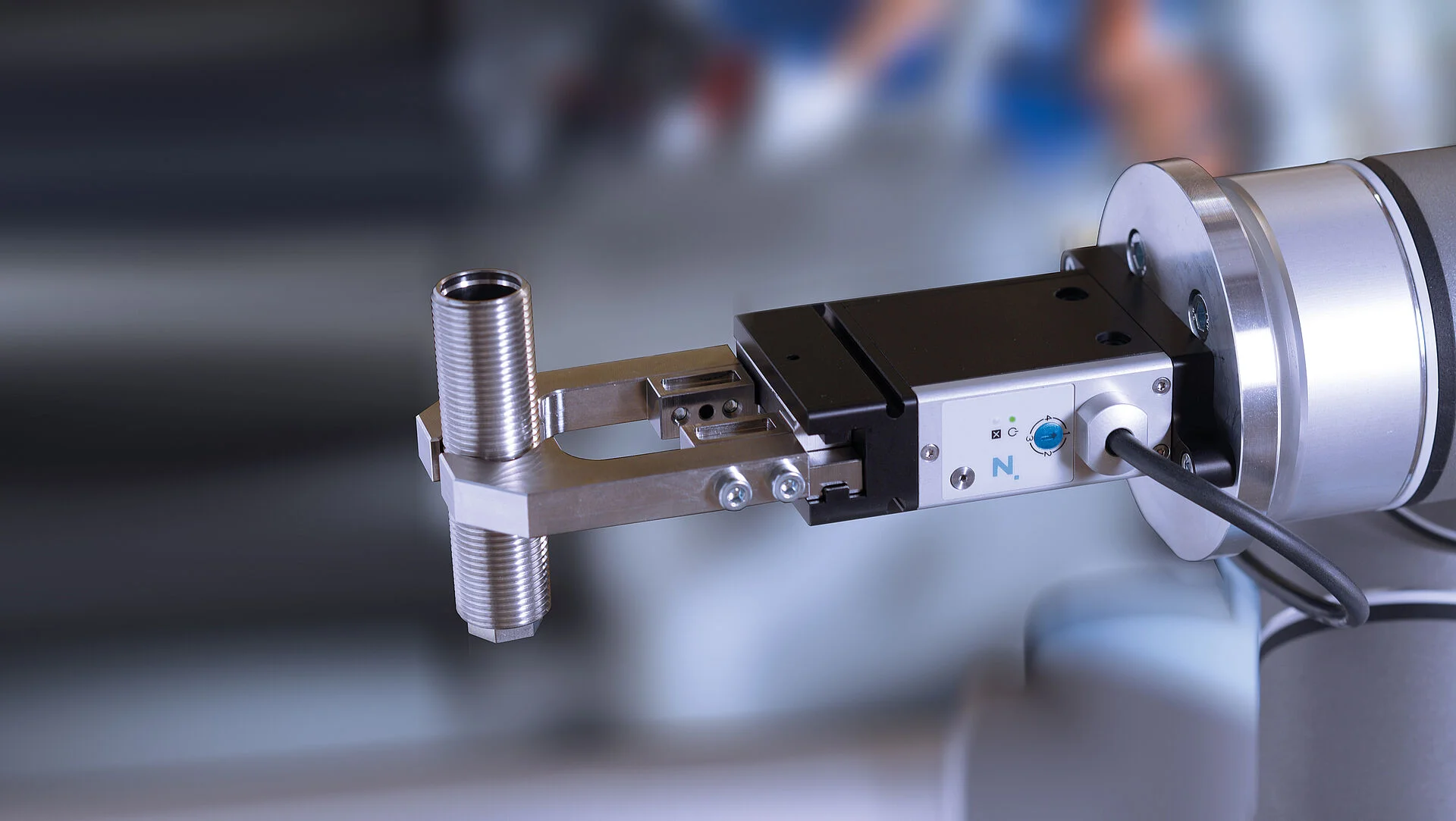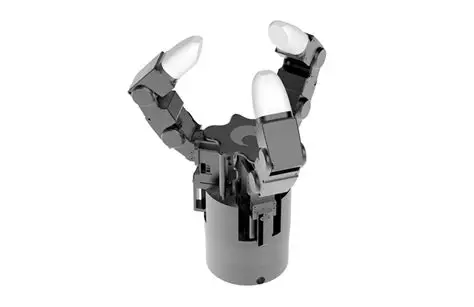Custom Machined Parts for Robotics Industry: Precision CNC Solutions for Advanced Automation
Introduction: The Critical Role of Precision Machining in Robotics
The robotics industry represents one of the most demanding sectors for precision component manufacturing, where exceptional accuracy and uncompromising reliability are non-negotiable requirements. As robotics technology continues to transform manufacturing, healthcare, logistics, and countless other fields, the demand for high-quality custom machined parts has never been greater. These components form the fundamental building blocks of robotic systems, translating digital commands into precise physical movements with micron-level accuracy.
At our CNC machining facility, we specialize in manufacturing precision components that meet the unique challenges of robotic applications. From collaborative robots working alongside human operators to industrial automation systems performing repetitive tasks with superhuman consistency, every robotic system depends on perfectly manufactured parts to function reliably. This comprehensive guide explores the technical specifications, material considerations, and manufacturing approaches that define excellence in robotic component manufacturing.
Understanding Robotic Component Requirements
The Unique Demands of Robotic Applications
Robotic systems impose specific requirements on their components that differ significantly from conventional machinery. These requirements stem from the need for repeated precision, minimal weight, and consistent performance under varying operational conditions:
Table 1: Key Requirements for Robotic Components
| Requirement | Technical Specification | Impact on Robotics Performance |
|---|---|---|
| Dimensional Accuracy | ±0.005mm to ±0.025mm | Ensures precise movement and positioning accuracy |
| Surface Finish | 0.4μm to 1.6μm Ra | Reduces friction, wear, and particle generation |
| Weight Optimization | High strength-to-weight ratio | Improves energy efficiency and payload capacity |
| Durability | Long-term reliability under cyclic loading | Minimizes maintenance downtime and extends service life |
| Stiffness | Minimal deflection under load | Maintains accuracy during operation |
| Thermal Stability | Consistent performance across temperature ranges | Ensures reliability in varying environments |
The combination of these requirements creates unique manufacturing challenges that demand specialized expertise. As noted in industry manufacturing processes, robotic components often require “专项专做” (specialized专项专做) – dedicated manufacturing approaches tailored to specific applications . This specialized approach ensures that each component meets the precise demands of its intended function within the robotic system.
Common Robotic Components and Their Functions
Robotic systems incorporate numerous custom machined parts, each serving critical functions:
-
Joint Components: Including harmonic drive gears, reducer gears, and bearing housings that enable precise rotational movement
-
Actuator Parts: Motor housings, encoder components, and drive elements that convert electrical energy into mechanical motion
-
Structural Elements: Arm sections, brackets, and frames that provide rigid support while minimizing weight
-
End-Effector Components: Gripper jaws, tool changers, and specialized tooling that interact with the environment
-
Sensor Mounting Systems: Precision fixtures that maintain accurate alignment of vision systems, position sensors, and force/torque sensors
Material Selection for Robotic Components
Engineering Materials for Demanding Applications
Selecting appropriate materials is crucial for robotic components, as the material properties directly impact performance, durability, and functionality:
Table 2: Common Materials for Robotic Components
| Material | Key Properties | Robotics Applications | Machining Considerations |
|---|---|---|---|
| Aluminum Alloys | Excellent strength-to-weight ratio, good corrosion resistance, high machinability | Arm structures, housings, brackets, mounting plates | High cutting speeds possible, requires sharp tools to prevent material adhesion |
| Stainless Steel | High strength, excellent corrosion resistance, durability | Joint components, fasteners, surgical instrument parts | Work-hardening tendency demands consistent feed rates and sharp tooling |
| Titanium Alloys | High strength-to-weight ratio, excellent corrosion resistance, biocompatibility | Aerospace robotics, surgical robots, high-stress components | Low thermal conductivity requires specialized tooling and cooling strategies |
| Engineering Plastics | Low friction, self-lubricating, electrical insulation | Bushings, wear plates, electrical insulators, guides | Lower cutting forces, but require sharp tools to prevent deformation |
| Copper Alloys | Excellent electrical and thermal conductivity, antimicrobial properties | Electrical components, heat sinks, antimicrobial surfaces | Gumminess requires specialized tool geometries and surface treatments |
The manufacturing process for robotic parts typically begins with material selection based on “强度、重量、耐腐蚀性等” (strength, weight, corrosion resistance, and other factors) . This careful selection process ensures that components will perform reliably in their intended operating environment while meeting weight and durability requirements.
Advanced Materials for Specialized Applications
As robotics technology advances, manufacturers are increasingly turning to specialized materials that offer enhanced performance characteristics:
-
Carbon Fiber Composites: Exceptional stiffness-to-weight ratio for applications where minimal deflection is critical
-
High-Performance Polymers: Materials like PEEK and ULTEM offer excellent chemical resistance and thermal stability
-
Specialized Aluminum Alloys: New formulations providing enhanced strength characteristics while maintaining low density
-
Metal Matrix Composites: Combining metallic properties with ceramic reinforcement for extreme wear resistance
CNC Machining Technologies for Robotic Components
Multi-Axis Machining Capabilities
The evolution of multi-axis CNC systems has dramatically expanded possibilities for robotic component manufacturing. Five-axis machining technology enables complete processing of complex geometries in single setups, eliminating cumulative errors associated with multiple repositioning operations and significantly improving accuracy.
This capability is particularly valuable for robotic components with organic shapes, complex contours, or multiple compound angles that would be impractical to produce with conventional three-axis equipment. The integration of automated systems, as demonstrated by companies like PrecisionForm, further enhances manufacturing efficiency for robotic components .
High-Speed Machining for Precision and Efficiency
Advanced toolpath strategies like dynamic milling and trochoidal machining have revolutionized the processing of both metallic and non-metallic robotic materials. These algorithms maintain constant tool engagement, reducing heat generation and extending tool life while enabling significantly higher material removal rates.
The implementation of high-speed machining strategies directly impacts manufacturing efficiency and quality. As demonstrated by RCM Industries, proper parameter selection and advanced toolpaths can increase throughput by approximately 15% while maintaining tight tolerances .
Micro-Machining for Miniature Components
The trend toward miniaturization in robotics has increased demand for micro-machining capabilities. Surgical robots, miniature collaborative robots, and compact automation systems require extremely small components with tight tolerances:
-
Small Feature Machining: Producing details as small as 0.1mm with positional accuracy within 0.005mm
-
Micro-tooling Expertise: Specialized tooling with diameters from 0.1mm to 3.0mm
-
High-Speed Spindles: Capabilities up to 50,000 RPM for clean micro-feature generation
-
Advanced Workholding: Specialized fixtures that securely hold small components without distortion
Quality Assurance for Robotic Components
Precision Measurement and Validation
Rigorous inspection protocols ensure robotic components meet precise dimensional and quality requirements before assembly. Robotic systems demand exceptional accuracy to function properly, necessitating comprehensive measurement strategies:
-
Coordinate Measuring Machines (CMM): Volumetric accuracy up to 0.0003mm for complex geometric features
-
Optical Comparators: Rapid 2D feature verification without contact
-
Surface Roughness Analysis: Verification of surface finish specifications critical for moving components
-
Custom Fixturing: Simulation of assembly conditions for functional validation
The manufacturing process for robotic parts typically concludes with “质量检测” (quality inspection) using methods such as “视觉检测、三坐标测量仪等手段” (visual inspection, coordinate measuring machines, and other methods) . This comprehensive approach to quality assurance ensures components will perform as intended in the final robotic system.
Statistical Process Control for Consistency
Implementing statistical process control (SPC) methodologies throughout the manufacturing process ensures consistent quality across production runs:
-
First-Article Inspection: Comprehensive verification of all dimensions on initial parts
-
In-Process Controls: Regular measurement of critical dimensions at predetermined intervals
-
Capability Studies (Cp/Cpk): Quantitative assessment of process capability for all controlled dimensions
-
Full Traceability: Material certifications and process documentation for each production batch
Case Studies: Robotic Component Manufacturing Excellence
Case Study 1: Collaborative Robot Joint Components
Challenge: A robotics manufacturer needed precision joint components for a new collaborative robot design. The components required exceptional dimensional stability, minimal weight, and smooth surface finishes to ensure precise movement and long service life.
Solution: Our team implemented a multi-stage machining approach incorporating:
-
Five-axis simultaneous machining for complex bearing surfaces
-
Progressive machining strategy with specialized tooling for optimal surface finish
-
Custom workholding to prevent distortion during machining of thin-walled sections
-
Comprehensive measurement of all critical features using CMM and surface roughness analysis
Results: The joint components achieved all dimensional requirements with surface finishes of 0.8μm Ra and weight specifications within 2% of target values. The components demonstrated exceptional performance in endurance testing, exceeding the manufacturer’s lifecycle requirements by 30%.
Case Study 2: Surgical Robot Instrument Components
Challenge: A medical device company needed miniature components for a new surgical robot system. The parts required exceptional precision, biocompatible materials, and the ability to withstand repeated sterilization cycles.
Solution: We developed a specialized machining process featuring:
-
Micro-machining capabilities with high-speed spindles for precise feature generation
-
Medical-grade materials with full traceability and certification
-
Controlled environment processing to maintain cleanliness standards
-
Electrochemical polishing for final surface enhancement and passivation
Results: The components met all functional requirements with complete documentation for regulatory submission. The precise dimensional control ensured proper fitment in the final assembly, and the surface finishes exceeded cleanliness requirements for surgical applications.
Case Study 3: Industrial Robot Gripper System
Challenge: An automation systems integrator needed custom gripper components for a material handling application. The components required quick delivery, precise features for sensor integration, and durability for 24/7 operation.
Solution: Our comprehensive approach included:
-
DFM analysis to optimize designs for manufacturability and performance
-
High-speed machining strategies to meet aggressive delivery timelines
-
Specialized tooling for precise sensor mounting features
-
Surface treatments to enhance wear resistance in high-cycle applications
Results: The gripper components were delivered within the required timeframe and demonstrated exceptional durability in operation. The precision features enabled accurate sensor alignment, and the components maintained dimensional stability through extended operation.
The Future of Robotic Component Manufacturing
Advanced Manufacturing Technologies
Emerging technologies are transforming robotic component manufacturing capabilities:
-
AI-Driven Optimization: Machine learning algorithms that dynamically adjust machining parameters based on real-time sensor data
-
Hybrid Manufacturing: Combining additive and subtractive processes for optimized component structures
-
Digital Twin Technology: Virtual modeling of the manufacturing process to predict outcomes before physical cutting
-
Sustainable Machining Practices: Reducing energy consumption while maintaining quality standards
Material Development Initiatives
Ongoing material science research continues to expand capabilities for robotic applications:
-
Enhanced Formulations: New composites with improved performance characteristics
-
Smart Materials: Components with embedded functionality for sensing and adaptation
-
Specialized Coatings: Advanced surface treatments for extreme environments
-
Multi-Material Components: Hybrid structures combining multiple materials for optimized performance
Conclusion: Partnering for Robotic Manufacturing Success
Custom machined parts for the robotics industry represent a specialized segment of precision manufacturing that demands both technical expertise and practical experience. The unique requirements of robotic systems—exceptional precision, reliability, and optimized performance—make component manufacturing particularly challenging. However, with the right manufacturing partner, these challenges can be transformed into competitive advantages.
At our manufacturing facility, we’ve combined state-of-the-art CNC technology with deep robotics knowledge to establish leadership in robotic component manufacturing. Our comprehensive approach addresses every aspect of the manufacturing process, from initial design consultation through final inspection and delivery, with particular emphasis on quality assurance and documentation.
The case studies presented demonstrate our capability to solve complex manufacturing challenges while maintaining the highest standards for precision and reliability. As robotics technology continues to evolve toward increasingly demanding applications, we remain committed to investing in advanced equipment and methodologies that enhance our robotic manufacturing capabilities.
For your next robotic component project, partner with a manufacturer that understands both the technical complexities and practical considerations of working with these exceptional systems. Contact us today to discuss how our custom machining capabilities for the robotics industry can address your specific application requirements.
Contact Us:Contact US -Online CNC Machining Service

